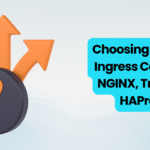
In today’s fast-paced digital landscape, businesses are continually seeking innovative solutions to enhance customer engagement and streamline operations. One such solution is the AI chatbot—a tool that has revolutionized the way companies interact with their customers. Imagine having a tireless assistant, available 24/7, capable of handling customer inquiries, processing orders, and providing personalized recommendations. This guide will walk you through the process of building an AI chatbot, offering insights into its benefits, development steps, and implementation strategies tailored for small business owners.
What is an AI Chatbot?
An AI chatbot is a software application designed to simulate human-like conversations with users. Utilizing technologies such as Natural Language Processing (NLP) and Machine Learning (ML), these chatbots can understand, interpret, and respond to user inputs in a conversational manner. Unlike traditional rule-based bots, AI chatbots learn from interactions, improving their responses over time.
Benefits of AI Chatbots for Small Businesses
Implementing an AI chatbot can offer numerous advantages:
-
Enhanced Customer Service: AI chatbots provide instant responses to customer queries, ensuring that assistance is available around the clock. This immediacy leads to increased customer satisfaction and loyalty.
-
Cost Savings: By automating routine tasks, businesses can reduce the workload on human staff, leading to significant cost reductions. According to AllBusiness.com, implementing chatbots can reduce customer support service costs by up to 30%.
-
Increased Efficiency: Chatbots can handle multiple interactions simultaneously, ensuring that no customer is left waiting. This efficiency allows human employees to focus on more complex tasks that require personal attention.
-
Personalized User Experience: By analyzing user data and behavior, AI chatbots can offer personalized recommendations, enhancing the user experience and potentially increasing sales.
Steps to Develop an AI Chatbot
Embarking on the journey of building an AI chatbot involves several key steps:
1. Define the Purpose and Scope
Begin by identifying the specific tasks you want the chatbot to perform. Is it to handle customer service inquiries, assist in sales, or provide information? Clearly defining the purpose will guide the development process and ensure the chatbot meets your business objectives.
2. Choose the Right Platform and Technology
Selecting the appropriate platform is crucial. For small businesses, user-friendly platforms like Microsoft Bot Framework or Google Dialogflow offer robust tools to build and deploy chatbots without extensive coding knowledge.
3. Design the Conversational Flow
Map out how interactions between the chatbot and users will unfold. This involves creating dialogue trees that anticipate user questions and define appropriate responses. A well-designed conversational flow ensures a seamless user experience.
4. Develop and Train the Chatbot
Utilize NLP and ML technologies to enable the chatbot to understand and process human language. Training involves feeding the chatbot with various user inputs and refining its responses based on performance.
5. Test and Iterate
Before full deployment, rigorously test the chatbot to identify and rectify any issues. Gather user feedback and make necessary adjustments to improve functionality and user satisfaction.
6. Deploy and Monitor
Once testing is complete, deploy the chatbot on your chosen platforms, such as your website or social media channels. Continuous monitoring is essential to ensure optimal performance and to make ongoing improvements based on user interactions.
Best Practices for Implementing AI Chatbots
To maximize the effectiveness of your AI chatbot, consider the following best practices:
-
Ensure Transparency: Inform users that they are interacting with a chatbot to set clear expectations.
-
Provide Human Support Options: While chatbots can handle many tasks, ensure there is an option for users to connect with a human representative for complex issues.
-
Regularly Update the Chatbot: Continuously train the chatbot with new data to improve its responses and keep up with changing user needs.
-
Monitor Performance Metrics: Track metrics such as user satisfaction, response time, and resolution rates to assess the chatbot’s effectiveness and identify areas for improvement.
Real-World Examples of AI Chatbots in Small Businesses
Many small businesses have successfully integrated AI chatbots into their operations:
-
E-commerce Stores: Online retailers use chatbots to assist customers in finding products, processing orders, and handling returns, thereby enhancing the shopping experience.
-
Healthcare Providers: Clinics employ chatbots to schedule appointments, provide preliminary medical information, and answer common patient questions.
-
Financial Services: Small banks and credit unions utilize chatbots to offer account information, assist with transactions, and provide financial advice.
Challenges and Considerations
While AI chatbots offer numerous benefits, it’s important to be aware of potential challenges:
-
Initial Setup Costs: Developing a custom chatbot may require an initial investment. However, as noted by Taazaa, pre-built AI chatbots are available for as little as $1,000, making them accessible to small and mid-sized businesses.
-
Data Privacy Concerns: Handling sensitive customer information necessitates robust security measures to protect data and comply with privacy regulations.
-
Maintaining Human Touch: Over-reliance on automation can lead to a lack of personal interaction. Balancing chatbot efficiency with human empathy is crucial for maintaining customer trust.
Future Trends in AI Chatbots
The landscape of AI chatbots is continually evolving. Emerging trends include:
-
Integration with Voice Assistants: Combining chatbots with voice-activated systems like Amazon’s Alexa or Google Assistant to offer hands-free customer interactions.
-
Advanced Personalization: Utilizing AI to analyze user behavior and preferences, enabling chatbots to provide highly personalized experiences.
-
Multilingual Support: Developing chatbots capable of understanding and responding in multiple languages to cater to a diverse customer base.
Conclusion
Incorporating an AI chatbot into your business operations can significantly enhance customer engagement, streamline processes, and provide a competitive edge in today’s digital marketplace. By following the steps outlined in this guide and adhering to best practices, small business owners can successfully develop and implement a chatbot tailored to their specific needs. Embrace this technology to not only meet but exceed customer expectations, driving growth and efficiency in your business.
Ready to transform your customer interactions? Start building your AI chatbot today and experience the myriad benefits it brings to your business.


